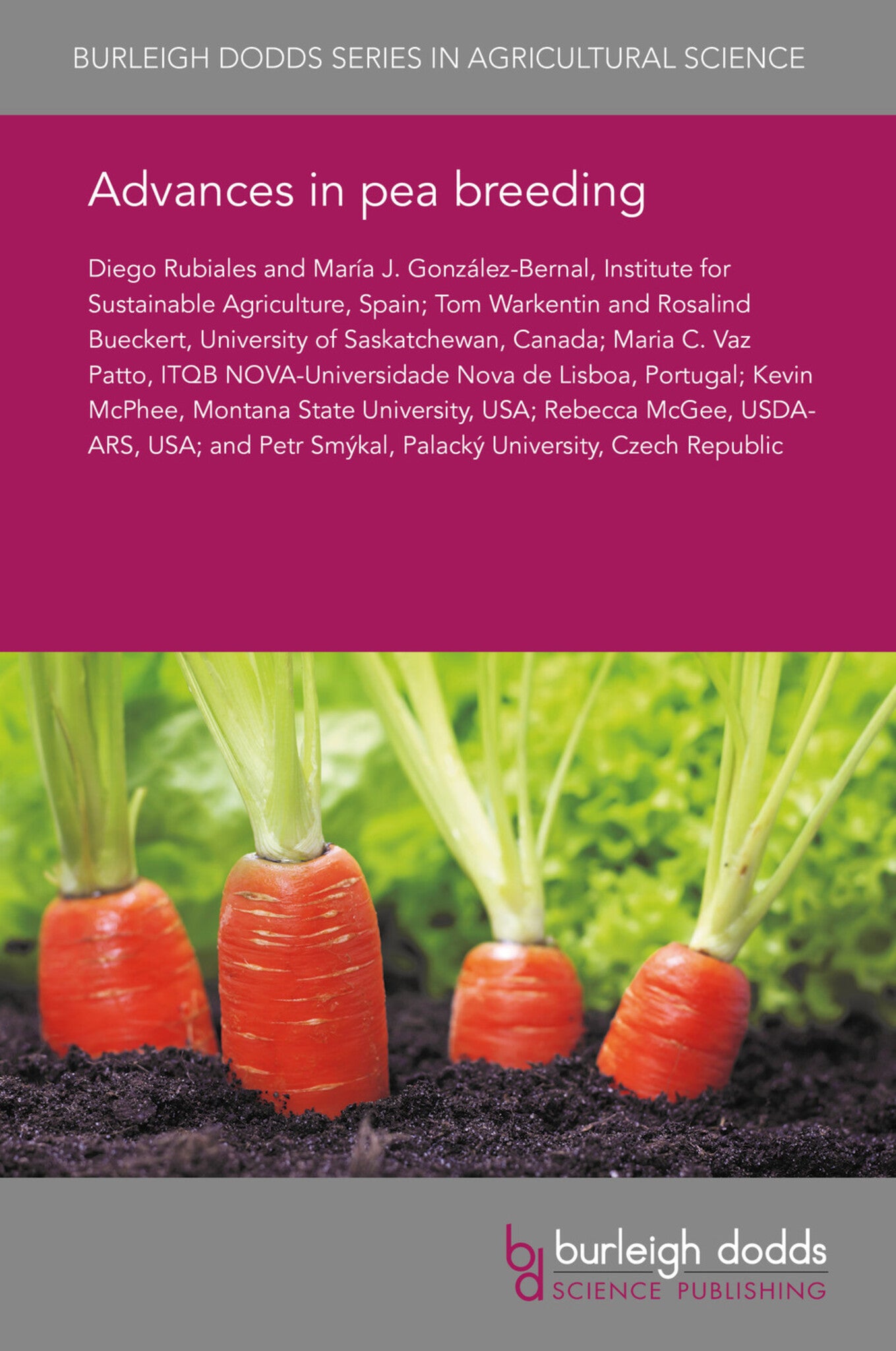We're sorry. An error has occurred
Please cancel or retry.
Advances in pea breeding
Dr diego rubiales,
Dr maría j. gonzález-bernal,
Dr tom warkentin,
Dr rosalind bueckert,
Dr maria c. vaz patto,
View More
Dr kevin mcphee,
Dr rebecca mcgee,
Dr petr smýkal
Regular price
£25.00
Sale price
£25.00
Regular price
£25.00
Unit price
/
per
Sale
Sold out
Re-stocking soon
Cultivated forms of pea can be classified as dry or field pea (dry seeds for food or feed), vegetable or green pea (young seeds, pods or shoots for food) and forage pea (for silage or grazing). Qua...
Read More

Some error occured while loading the Quick View. Please close the Quick View and try reloading the page.
Couldn't load pickup availability
- Format:
-
09 September 2019

Cultivated forms of pea can be classified as dry or field pea (dry seeds for food or feed), vegetable or green pea (young seeds, pods or shoots for food) and forage pea (for silage or grazing). Quality requirements differ for each pea type. This chapter reviews advances in pea breeding, including the importance of genetic resources and diversity to pea breeding. The chapter examines the purposes of breeding, including improved/stable yield, improved quality and resistance to biotic and abiotic stresses. Finally, the chapter looks ahead to future research trends in this area.

Price: £25.00
Publisher: Burleigh Dodds Science Publishing
Imprint: Burleigh Dodds Science Publishing
Series: Burleigh Dodds Series in Agricultural Science
Publication Date:
09 September 2019
ISBN: 9781838798925
Format: eBook
BISACs:
SCIENCE / Life Sciences / Horticulture, Commercial horticulture, TECHNOLOGY & ENGINEERING / Agriculture / Agronomy / Crop Science, TECHNOLOGY & ENGINEERING / Agriculture / Sustainable Agriculture, Sustainable agriculture, Agronomy and crop production

1 Introduction 2 Genetic resources and diversity 3 Breeding for improved/stable yield 4 Breeding for improved quality 5 Breeding for resistance to biotic stresses 6 Breeding for resistance to abiotic stresses 7 Conclusion 8 Where to look for further information 9 References



